Birdfinding.info ⇒ Common across much of eastern Mexico and Central America. Especially abundant along the Caribbean coast of the Yucatán Peninsula from Cancún and Cozumel through Belize and adjacent portions of Guatemala and Honduras. In Texas it has been found consistently at several sites along the Rio Grande: Vega Verde Road in Del Rio, Max A. Mandel Municipal Golf Course and Zacate Creek in Laredo, San Ygnacio Bird Sanctuary, the Zapata County Public Library, and Salineño Wildlife Preserve.
Morelet’s Seedeater
Sporophila morelleti
Middle America from Texas to Panama, in open and mixed habitats with tall grasses, including agricultural fields, roadsides, and marshes.
Resident along the Rio Grande from Del Rio, Texas, south, then generally throughout eastern Mexico’s Gulf lowlands, the Yucatán Peninsula (including Cozumel), and along both coasts from the Isthmus of Tehuantepec east and south to western Panama (to Bocas del Toro and Chiriquí, but expanding east in the Pacific lowlands).
Identification
A small, variable finch that can be identified in all plumages by the combination of a typical Sporophila bill (short, thick, and rounded) and two broad wingbars.
Male has a black helmet, white undereye crescent, white throat and collar, black wings and tail, and white wingbars. The broad white collar is sometimes complete, but usually broken by a dark midline on the nape. The male’s bill is usually black, but occasionally pale.
The male’s back, rump, and underparts vary regionally, seasonally, and individually. Males in breeding plumage and southern populations tend to show strongly contrasting black-and-white patches, whereas nonbreeding and northern males tend to show a similar pattern, but a washed-out gray-and-buffy version.
The back can be either olive, gray, or black, and the rump can be either buffy or white.
The underparts can be either buffy or white, with a broad black band across the chest—but the band is usually lacking or very subtle in males of the northern population (sharpei).
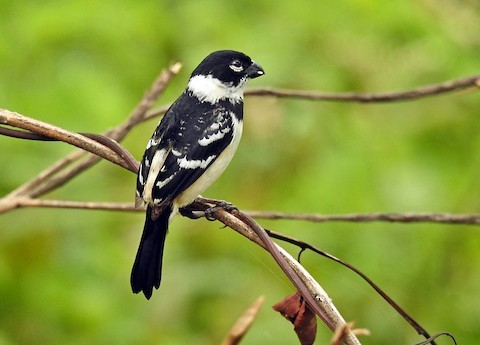
Morelet’s Seedeater, S. m. morelleti, male showing mostly black back and white rump. (Sendero La Naturaleza, Cerro Azul Meámbar National Park, Honduras; May 18, 2019.) © Romel Romero

Morelet’s Seedeater, S. m. morelleti, male with olive-gray back and buffy rump. (Consejo, Belize; April 15, 2019.) © Mary Goodart

Morelet’s Seedeater, S. m. morelleti, male with black back and white underparts. (Belize City, Belize; July 26, 2019.) © Francis Canto, Jr.
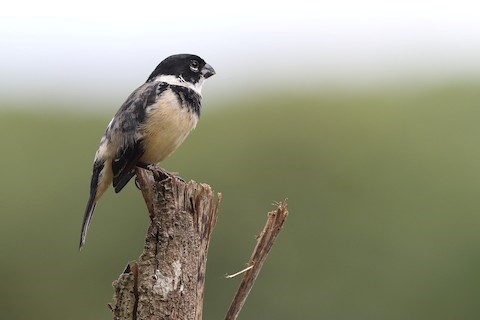
Morelet’s Seedeater, S. m. morelleti, male with olive-gray back and buffy rump and underparts. (Mayflower Bocawina National Park, Belize; December 22, 2019.) © Frank Pinilla
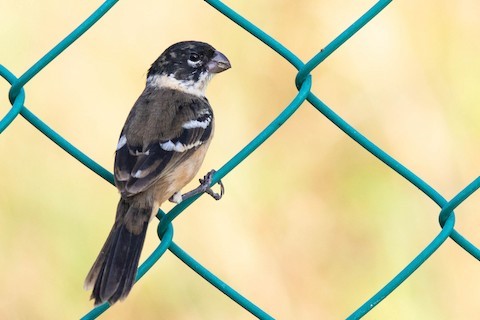
Morelet’s Seedeater, S. m. morelleti, male with mostly grayish-brown back and rump. (Vista del Mar, Belize; April 5, 2020.) © Hernan Riverol

Morelet’s Seedeater, S. m. morelleti, male with mixed black and gray upperparts and mixed buffy and white underparts. (Crooked Tree Village, Belize; December 16, 2019.) © Ian Burgess
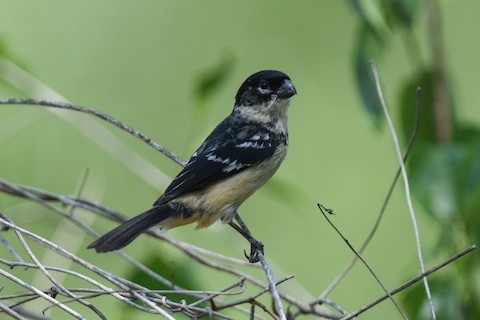
Morelet’s Seedeater, S. m. sharpei, male in breeding plumage with mostly black back, mostly white throat and neck, and partial blackish chest band. (San Ygnacio Bird Sanctuary, Texas; May 7, 2017.) © Mike Charest
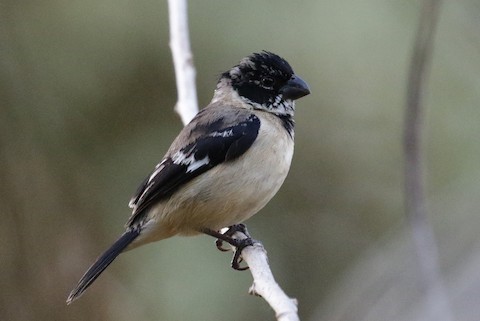
Morelet’s Seedeater, S. m. morelleti, male with mostly grayish back and partial black chest band. (Cabuya, Puntarenas, Costa Rica; March 16, 2019.) © Cameron Eckert

Morelet’s Seedeater, S. m. sharpei, male with mostly grayish back. (Salineño Wildlife Preserve, Texas; November 26, 2019.) © Lisa Cancade Hackett

Morelet’s Seedeater, S. m. sharpei, male with mostly grayish back. (Salineño Wildlife Preserve, Texas; January 5, 2019.) © Mark Scheel
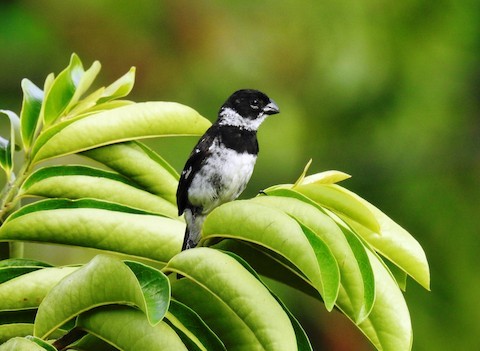
Morelet’s Seedeater, S. m. morelleti, male with black upperparts and white underparts. (San Pedro Sula, Honduras; August 26, 2018.) © Francisco Dubón

Morelet’s Seedeater, S. m. morelleti, male with black upperparts and full white collar. (Flores, Petén, Guatemala; April 11, 2018.) © Jorge Dangel

Morelet’s Seedeater, S. m. morelleti, male. (Consejo, Belize; April 15, 2019.) © Mary Goodart
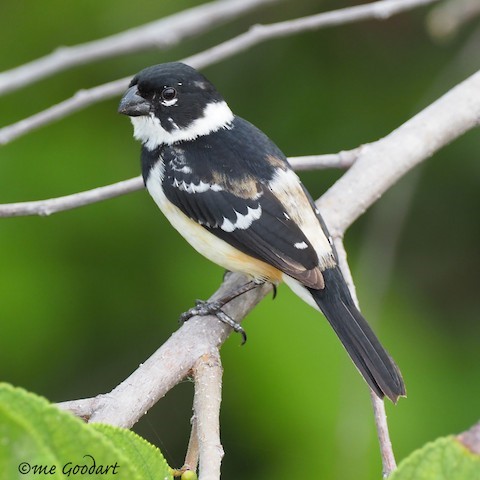
Morelet’s Seedeater, S. m. morelleti, male showing mostly black back and white rump. (Consejo, Belize; April 15, 2019.) © Mary Goodart
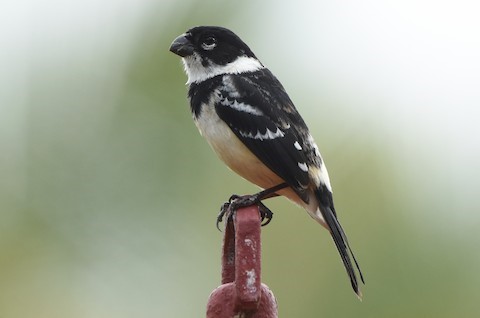
Morelet’s Seedeater, S. m. morelleti, male with mostly black back and white rump.. (Hopkins, Belize; January 16, 2019.) © Steve Tucker
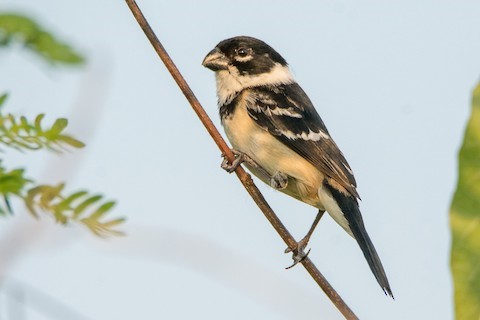
Morelet’s Seedeater, S. m. morelleti, male with black upperparts and buffy underparts. (El Cuyo, Tabasco, Mexico; April 23, 2017.) © Juan Miguel Artigas Azas

Morelet’s Seedeater, S. m. morelleti, male with black back and white rump. (Ortega, Guanacaste, Costa Rica; May 29, 2017.) © Gillian Mastromatteo
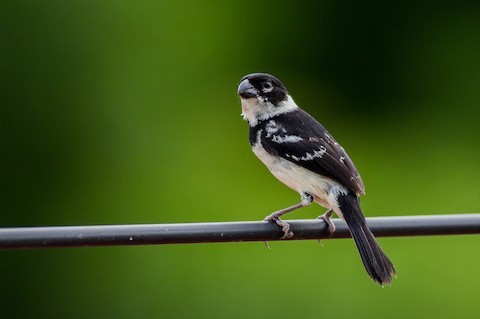
Morelet’s Seedeater, S. m. morelleti, male with black upperparts and white underparts. (Cristo Rey, Belize; August 18, 2020.) © Zhawn Poot
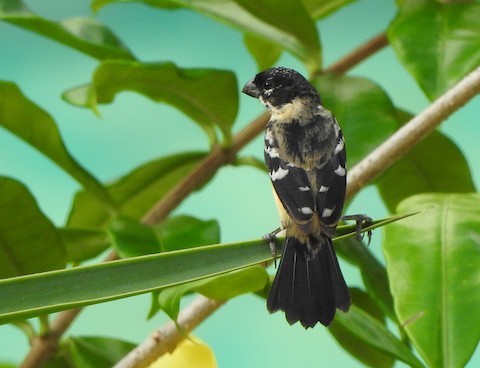
Morelet’s Seedeater, S. m. morelleti, male with mixed black and gray back and rump. (Chan-Kah Resort Village, Palenque, Chiapas, Mexico; March 22, 2019.) © Ad Konings
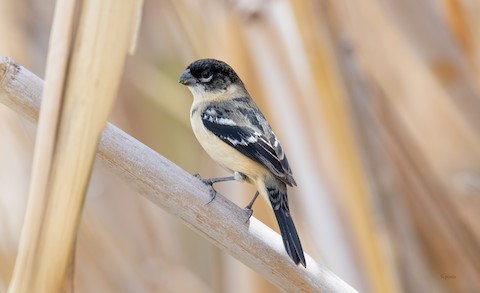
Morelet’s Seedeater, S. m. sharpei, male with mixed gray and black back. (Max A. Mandel Municipal Golf Course, Laredo, Texas; March 11, 2021.) © Shailesh Pinto

Morelet’s Seedeater, S. m. sharpei, male with mixed gray and black back and buffy underparts. (Robert Muller Park, Laredo, Texas; February 21, 2020.) © Kip Miller

Morelet’s Seedeater, S. m. morelleti, male showing grayish back and partial black chest band. (La Milpa Maya, Belize; March 25, 2019.) © Holger Teichmann
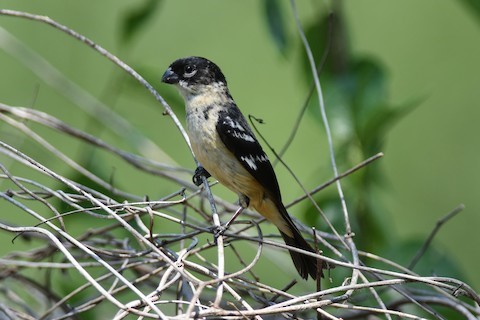
Morelet’s Seedeater, S. m. sharpei, male. (San Ygnacio Bird Sanctuary, Texas; May 7, 2017.) © Mike Charest
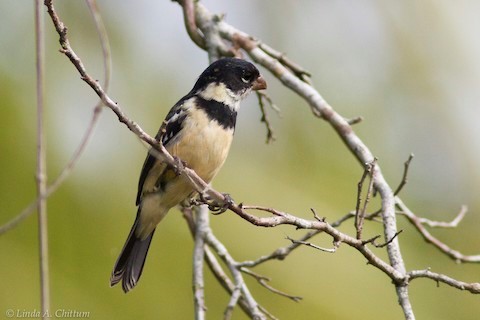
Morelet’s Seedeater, S. m. morelleti, male with buffy underparts. (Belize Botanical Garden, Belize; March 17, 2013.) © Linda A. Chittum
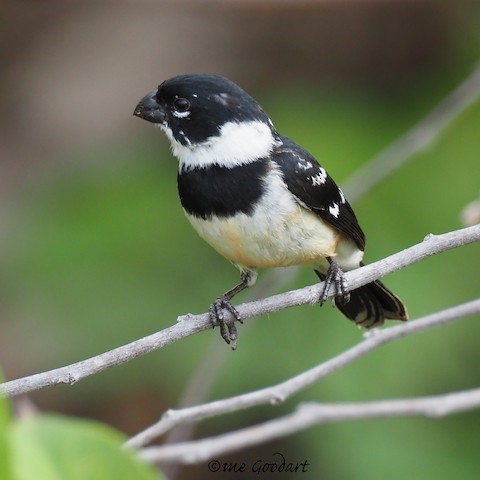
Morelet’s Seedeater, S. m. morelleti, male in breeding plumage. (Consejo, Belize; April 15, 2019.) © Mary Goodart
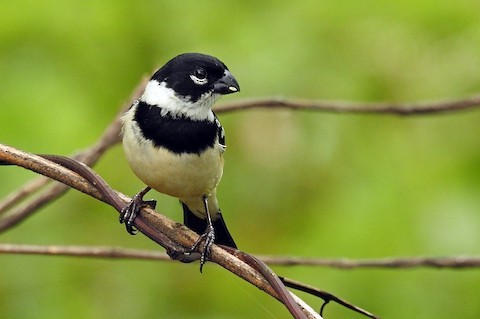
Morelet’s Seedeater, S. m. morelleti, male in breeding plumage. (Sendero La Naturaleza, Cerro Azul Meámbar National Park, Honduras; May 18, 2019.) © Romel Romero

Morelet’s Seedeater, S. m. morelleti, male with buffy underparts. (Belize City, Belize; April 28, 2020.) © Francis Canto, Jr.

Morelet’s Seedeater, S. m. morelleti, male with buffy underparts and a pale bill. (Belize Botanical Garden, Belize; March 17, 2013.) © Linda A. Chittum

Morelet’s Seedeater, S. m. morelleti, male in breeding plumage. (San Pedro Sula, Honduras; April 10, 2016.) © Francisco Dubón

Morelet’s Seedeater, S. m. morelleti, male. (Chan-Kah Resort Village, Palenque, Chiapas, Mexico; March 17, 2019.) © Don Danko

Morelet’s Seedeater, S. m. sharpei, male. (San Ygnacio Bird Sanctuary, Texas; May 7, 2017.) © Mike Charest

Morelet’s Seedeater, S. m. morelleti, male with buffy underparts. (Sendero La Naturaleza, Cerro Azul Meámbar National Park, Honduras; May 18, 2019.) © Romel Romero

Morelet’s Seedeater, S. m. morelleti, male in breeding plumage. (Sendero La Naturaleza, Cerro Azul Meámbar National Park, Honduras; March 22, 2018.) © Romel Romero
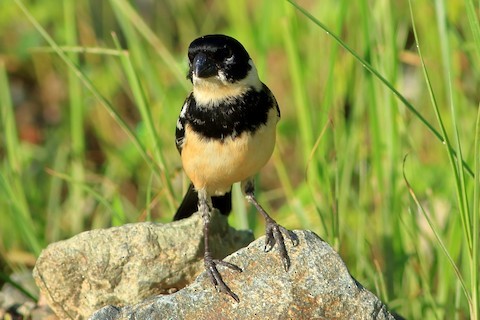
Morelet’s Seedeater, S. m. morelleti, male with buffy underparts. (Talavera, Nicaragua; December 14, 2019.) © Manfred Bienert

Morelet’s Seedeater, S. m. morelleti, male with white underparts. (Siguatepeque, Honduras; March 3, 2018.) © Oscar Rolando Suazo Ortega

Morelet’s Seedeater, S. m. morelleti, male. (Lamanai Outpost Lodge, Belize; January 7, 2020.) © Jorge Eduardo Ruano
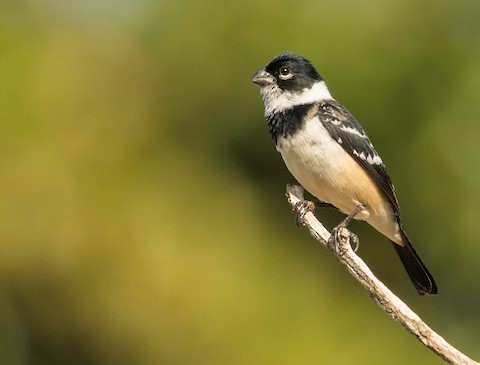
Morelet’s Seedeater, S. m. morelleti, male with buffy belly. (Bacalar, Quintana Roo, Mexico; February 21, 2018.) © Ian Routley
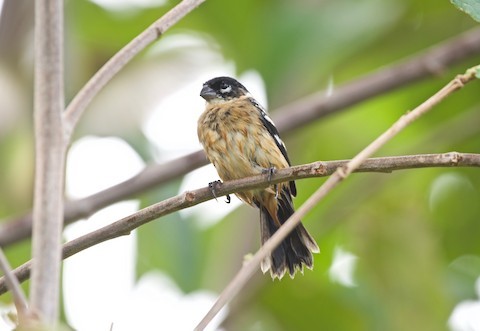
Morelet’s Seedeater, S. m. morelleti, subadult male. (Punta Norte, Cozumel, Mexico; December 26, 2018.) © Ian Jarvie

Morelet’s Seedeater, S. m. morelleti, subadult male. (Palenque, Chiapas, Mexico; February 22, 2011.) © Micheline Bisson
Females are drab and nondescript, with mostly grayish-olive-to-brownish upperparts, buffy underparts, and two broad buffy wingbars. The bill can be either dark or pale.
Immatures resemble females. The sexes become distinguishable gradually, as the males turn blackish on the wings, tail, and head.

Morelet’s Seedeater, S. m. morelleti, female. (Cancún, Quintana Roo, Mexico; November 24, 2014.) © Alex Lamoreaux

Morelet’s Seedeater, S. m. sharpei, female. (La Estanzuela Natural Park, Monterrey, Nuevo León, Mexico; February 12, 2016.) © Patrick Van Thull
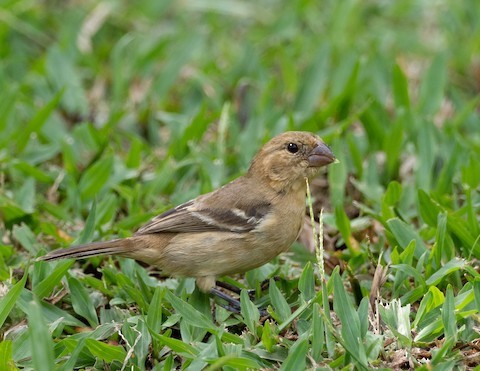
Morelet’s Seedeater, S. m. morelleti, female. (Caño Negro Nature Lodge, Costa Rica; February 17, 2020.) © Jan Allen
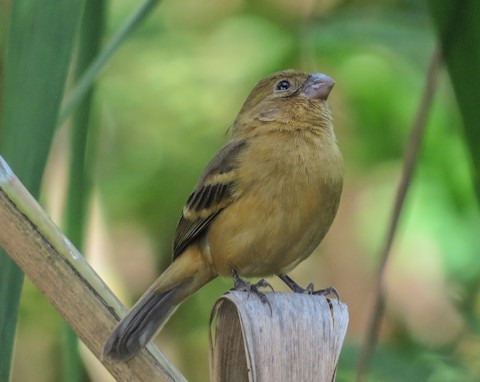
Morelet’s Seedeater, S. m. morelleti, female. (Dangriga, Belize; October 2, 2017.) © Roni Martinez

Morelet’s Seedeater, S. m. sharpei, female with buffy underparts. (Salineño Wildlife Preserve, Texas; February 16, 2018.) © Luke Tiller
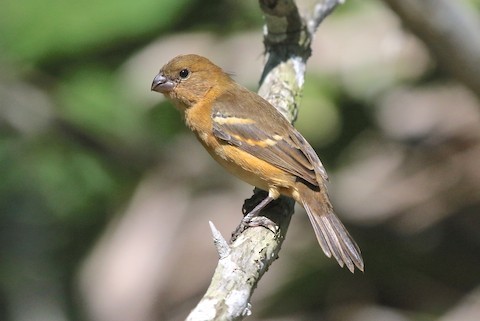
Morelet’s Seedeater, S. m. morelleti, female. (Black Orchid Resort, Belize; October 28, 2015.) © Arman Moreno

Morelet’s Seedeater, S. m. morelleti, female. (Sendero La Naturaleza, Cerro Azul Meámbar National Park, Honduras; March 22, 2018.) © Romel Romero
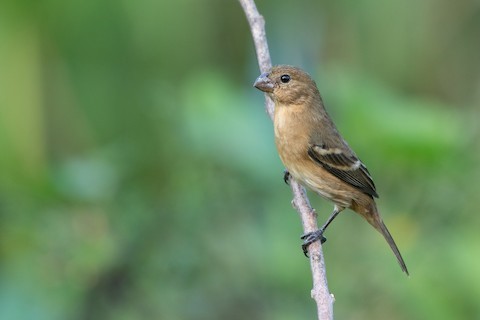
Morelet’s Seedeater, S. m. morelleti, female. (Finca Tijax, Río Dulce, Guatemala; January 5, 2021.) © Ana Paula Oxom

Morelet’s Seedeater, S. m. sharpei, female. (Salineño Wildlife Preserve, Texas; December 7, 2018.) © Ryan Sanderson

Morelet’s Seedeater, S. m. morelleti, female. (Chapel Hill Road, Benque Viejo del Carmen, Belize; December 22, 2020.) © Isaias Morataya
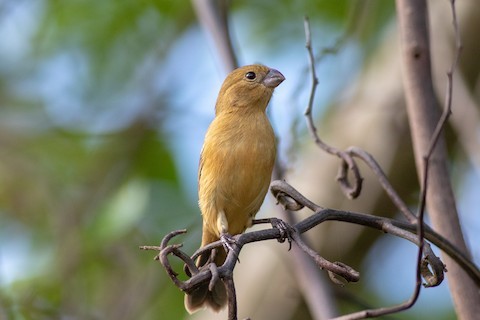
Morelet’s Seedeater, S. m. morelleti, female. (Placencia, Belize; November 2, 2019.) © Francis Canto, Jr.
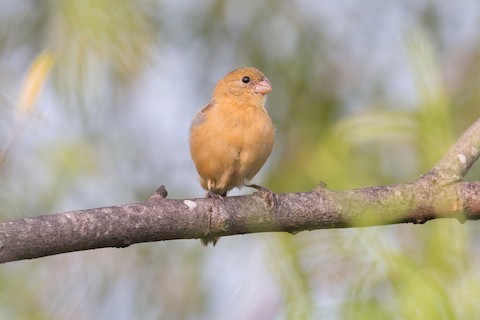
Morelet’s Seedeater, S. m. sharpei, female with buffy underparts. (Presa Rodgrigo Gómez, Santiago, Nuevo León, Mexico; August 26, 2017.) © Patrick Van Thull
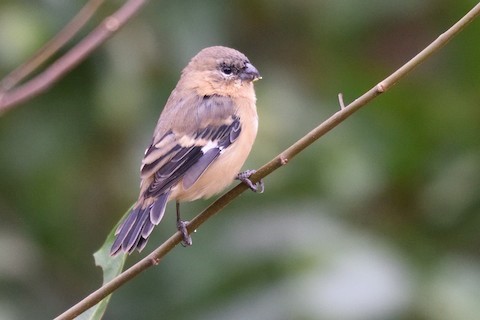
Morelet’s Seedeater, S. m. sharpei, immature male. (Casa de La Naturaleza, Tampico, Tamaulipas, Mexico; November 14, 2018.) © German Garcia
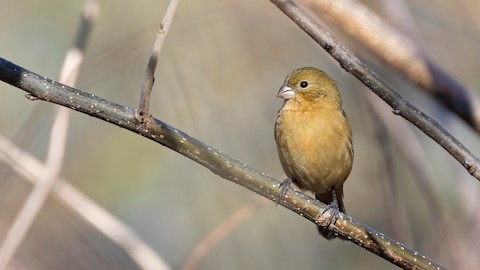
Morelet’s Seedeater, S. m. sharpei, female with buffy underparts. (Spofford, Texas; December 20, 2020.) © Bryan Calk

Morelet’s Seedeater, S. m. morelleti, female or immature male. (Green Hills Butterfly Ranch, Belize; August 13, 2017.) © Jan Meerman

Morelet’s Seedeater, S. m. sharpei, immature male—note black wings. (Zacate Creek, Laredo, Texas; November 14, 2019.) © Kevin Manley
Cf. Wing-barred Seedeater. Male Morelet’s and Wing-barred Seedeaters are extremely similar, but their ranges do not overlap. Male Wing-barred typically has more extensively black upperparts and a narrower black band on its chest, whereas Morelet’s often has some olive or gray on the back and usually has a broad black band. A more objective distinction, with a close view or sharp photo, is the amount of white under the eye: on Morelet’s a crescent, but on Wing-barred just a spot.
Females are less similar—although their names suggest otherwise, female Morelet’s is the only one that has wingbars. Bill color might also be a reliable distinction: female Morelet’s has a pale bill, whereas female Wing-barred has a dark bill.
Notes
Polytypic species consisting of three recognized subspecies. Formerly regarded as conspecific with the Cinnamon-rumped Seedeater (torqueola) of western Mexico, known collectively as the White-collared Seedeater (S. torqueola).
References
Alderfer, J., and J.L. Dunn. 2014. National Geographic Complete Birds of North America (Second Edition). National Geographic Society, Washington, D.C.
BirdLife International. 2017. Sporophila morelleti (amended version of 2016 assessment). The IUCN Red List of Threatened Species 2017: e.T22731776A119483309. https://dx.doi.org/10.2305/IUCN.UK.2017-3.RLTS.T22731776A119483309.en. (Accessed May 13, 2021.)
Burns, K.J., A.J. Shultz, P.O. Title, N.A. Mason, F.K. Barker, J. Klicka, S.M. Lanyon, and I.J. Lovette. 2014. Phylogenetics and diversification of tanagers (Passeriformes: Thraupidae), the largest radiation of Neotropical songbirds. Molecular Phylogenetics and Evolution 75:41-77.
eBird. 2021. eBird: An online database of bird distribution and abundance. Cornell Lab of Ornithology, Ithaca, N.Y. http://www.ebird.org. (Accessed May 13, 2021.)
Fagan, J., and O. Komar. 2016. Peterson Field Guide to the Birds of Northern Central America. Houghton Mifflin Harcourt, New York.
Garrigues, R., and R. Dean. 2014. The Birds of Costa Rica: A Field Guide (Second Edition). Cornell University Press.
Howell, S.N.G., and S. Webb. 1995. A Guide to the Birds of Mexico and Northern Central America. Oxford University Press.
Ridgely, R.S., and J.A. Gwynne. 1989. A Guide to the Birds of Panama (Second Edition). Princeton University Press.
Sibley, D.A. 2000. The Sibley Guide to Birds. Alfred A. Knopf. New York.
Stiles, F.G., A.F. Skutch, and D. Gardner. 1989. A Guide to the Birds of Costa Rica. Cornell University Press.
Xeno-Canto. 2021. Morelet’s Seedeater – Sporophila morelleti. https://www.xeno-canto.org/species/Sporophila-morelleti. (Accessed May 13, 2021.)

